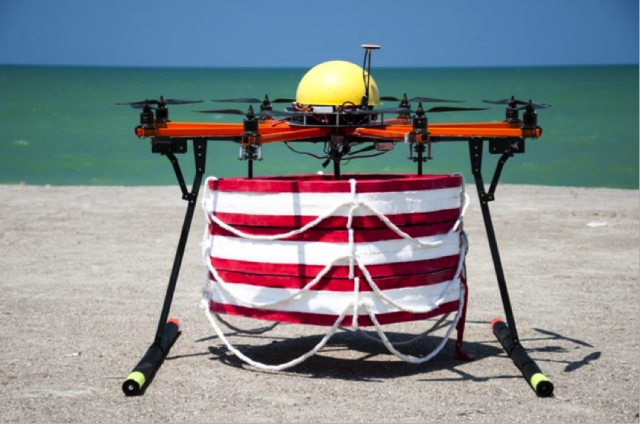An Iranian research lab has created a UAS to save people drowning at sea. Developed by Tehran-based RTS Lab, Pars is a multi-rotor UAS designed to carry and drop floatation aids to people in trouble. First conceptualized only a year ago, Pars is now a functioning prototype that recently underwent testing in the Caspian Sea.
Located around 100 miles from Tehran, the Caspian has borne witness to a number of drownings over the years, including an unfortunate incident earlier this year that saw six students drown together. It’s hoped that Pars will significantly help lifeguards in scenarios where multiple people are in trouble at the same time, and can also make their lives easier when aiding a single swimmer.
There are a number of use-cases for the UAS, from simply dropping a floatation aid to a conscious swimmer who’s struggling, to finding an unconscious swimmer and dropping an aid once a lifeguard arrives on scene. This allows the lifeguard to swim out to the person unhampered by an aid, hopefully speeding up the rescue and saving lives in the process. Pars could be kept near dangerous swimming spots or stowed aboard a ship and used out at sea. Like most UAS, it can keep track of its journey using GPS and automatically return to base when it’s finished its mission.
In the most recent battery of tests, RTS Lab pitted Pars against a regular lifeguard. The aim was rescue a volunteer “drowning person” 75 meters away from shore. According to the lab, the drone successfully deployed a flotation aid to the swimmer in 22 seconds, almost 50 seconds faster than the lifeguard. RTS also tested Pars at night, using built-in LED lights to find and help swimmers.
The tests so far have been successful, and the team say they’ve now corrected any issues and are preparing to introduce Pars internationally. In the future, it’s hoped the UAS will be able to automatically search out and rescue drowners using AI, but for now the main issue for the lab is funding — they’re in search of sponsorship and investment in order to move Pars from prototype to production.
Source: The Verge

